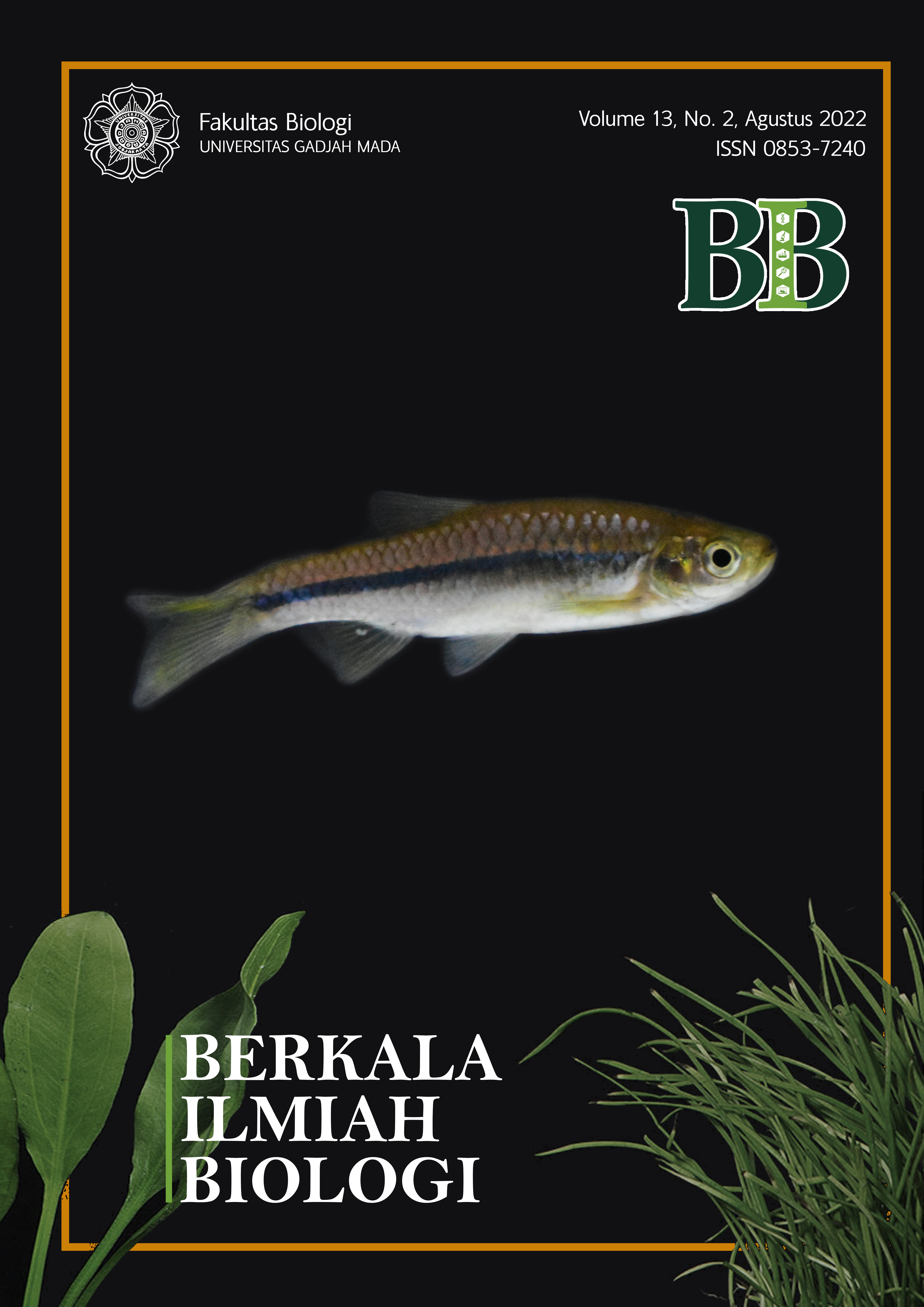Morphological Structure and Fertility of Melinjo (Gnetum gnemon L.) Pollen based on Microscopic Data
Isi Artikel Utama
Abstrak
Melinjo (Gnetum gnemon L.) is the only species of the genus Gnetum that is quickly grown and cultivated in Indonesia. Melinjo is also an economically valuable plant, and the most famous product is emping as a potential small industrial sector commodity and brightly projected in the development of non-oil and gas exports. However, taxonomic studies of pollen morphology of Melinjo are rare, and the pollen fertility needs to study to increase Melinjo production and answer the demand for seeds. Morphological characterization can be used for taxonomic studies such as The Pollen Dispersal Units (PDUs), polarity, shape, symmetry, apertura, and skulptur (ornamentation) (Hasanuddin, 2018). Melinjo pollen has a level of germination (if it did without treatment pra-germination) only 1 – 2% during six months, and reach 100% during 12 months (World Agroforesty, 2021). Further, if pollen is saved in an organic liquid, it can increase the level of germination during 11 weeks to reach 80,63% (Kairani, 2010). The experiment aimed to study pollen morphology, ultrastructure, and fertility of pollen Melinjo. Pollen morphology, ultrastructure, and fertility were carried out by removing the blooming strobilus at branch Melinjo trees. Acetylysis method is used to observe the pollen morphology, Scanning Electron Microscopy (SEM) is used to observe exin ornamentation, and aperture, and tetrazolium staining method is used for fertility test of Melinjo pollen.
Rincian Artikel

This work is licensed under a Creative Commons Attribution 4.0 International License.


